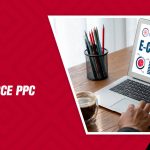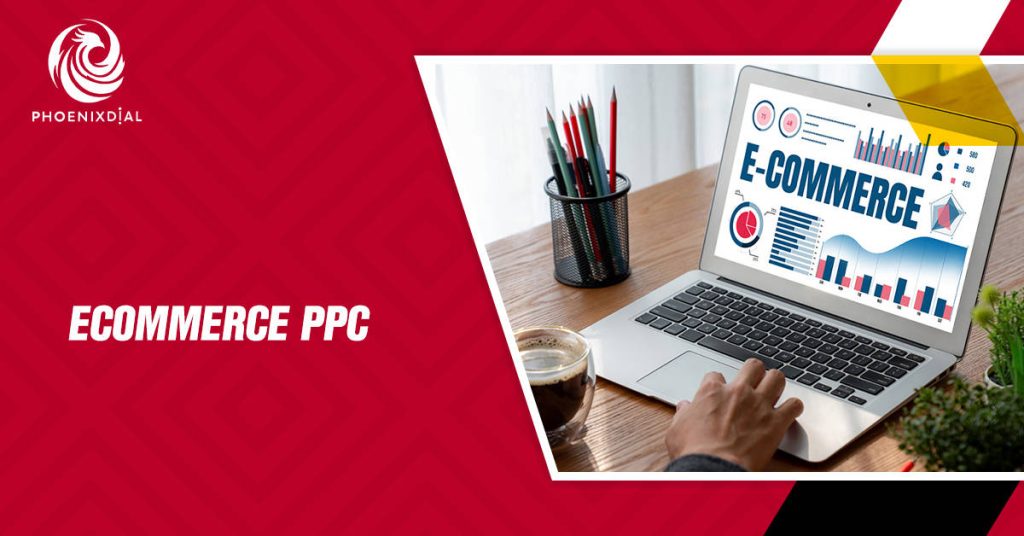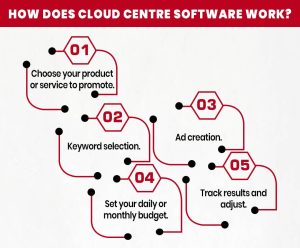

Did you know that over 65% of online sales come from paid ads? That’s the power of Ecommerce PPC in today’s digital world. Every day, millions of shoppers click on paid ads before making a purchase. This shows how effective PPC can be for eCommerce stores that want quick results and steady growth.
Table of Contents
ToggleStill, many online store owners find themselves stuck. They spend money on ads but see little to no return. Why? Because their campaigns are not set up the right way. Poor keyword choices, weak ad copies, or targeting the wrong audience can drain your budget fast. Without a proper ecommerce ppc strategy, it’s easy to get lost in the competition and miss out on real buyers who are ready to purchase.
That’s where Phoenix Dial comes in. We’re a team of PPC specialists who understand what makes eCommerce ads perform. With our expert ecommerce ppc management, we design smart campaigns that attract the right audience and turn clicks into conversions. In this blog, we’ll break down everything you need to know about ppc for ecommerce — how it works, why it’s important, and how you can use it to boost your online sales.
Start Growing Your Business Today
Get a free, personalized quote via WhatsApp for your business. No pressure—just smart solutions tailored to your goals.
PPC (Pay-Per-Click) is a type of online advertising where you pay only when someone clicks on your ad. It’s one of the fastest ways to bring people to your online store. Instead of waiting for months to get traffic through SEO, PPC helps your products appear right in front of buyers who are already searching for what you sell.
For eCommerce businesses, this is a game changer. With ppc for ecommerce, you can target shoppers who are ready to buy. For example, if someone searches “buy wireless headphones,” your ad can appear on top of search results. When they click, they go straight to your product page. This simple and direct approach helps online stores attract real customers and increase sales quickly.
There are many platforms where ecommerce ppc management works best. The most popular ones include Google Ads, Facebook Ads, and Instagram Ads. Google Ads shows your products in search results or shopping tabs, while Facebook and Instagram display your ads to users based on their interests, behavior, and online activity. These platforms make it easy to reach people who are already looking for your products or might be interested in them.

PPC for ecommerce works through a simple but smart process that helps online stores get quick traffic and sales. You create ads that appear when people search for your products, and you pay only when someone clicks on them. This system helps eCommerce businesses reach real buyers who are ready to shop. Let’s break it down step by step.
Start by deciding which product or service you want to advertise. Pick items that are popular, have good reviews, or bring higher profits. For example, if you run an online clothing store, you can promote your best-selling jackets during the winter season. Choosing the right product is the first step toward building a successful ecommerce ppc strategy.
Next, find the right keywords people use when searching for your products. Keywords help your ads show up to the right audience. Use tools like Google Keyword Planner or SEMrush to discover what customers are typing into search engines. For instance, if you sell handmade soaps, good keywords could be “natural soap for dry skin” or “organic handmade soaps.” Smart keyword research is key to effective ecommerce ppc management.
Now it’s time to create your ad. Write a short, clear, and catchy message that tells people why they should click. Add an attractive image, a strong call-to-action like “Shop Now” or “Get 20% Off,” and make sure it matches your brand. On platforms like Google Ads, your ad appears in search results, while on Facebook Ads and Instagram Ads, it shows up in users’ feeds. Good ad design makes your ppc ecommerce campaigns stand out.
One of the best parts about ecommerce ppc services is full budget control. You decide how much to spend each day or month. Start small to test what works, then increase your budget once you see results. For example, you can set a $10 daily budget to promote your top product and scale it as you get more sales.
After launching your campaign, tracking is crucial. Use tools like Google Analytics or Meta Ads Manager to see how your ads are performing. Check metrics like clicks, conversions, and return on ad spend (ROAS). If an ad isn’t performing well, tweak the keywords, visuals, or audience settings. This step ensures your ppc management ecommerce stays effective and profitable.
PPC for ecommerce is one of the fastest and most effective ways to promote online stores. Unlike organic marketing, which takes time to show results, PPC brings your products in front of buyers almost instantly. It helps eCommerce websites attract customers, increase sales, and stay ahead of competitors. Let’s look at the main reasons why eCommerce sites should invest in ecommerce ppc services.
When you run a PPC ad, your product can appear at the top of search results within minutes. This gives your business instant visibility, especially on platforms like Google Ads and Facebook Ads. For example, if you sell phone cases and someone searches “buy phone cases online,” your ad can appear right away, even if your website is new. With ppc ecommerce, you don’t have to wait months for SEO to work — your store gets noticed immediately.
Ecommerce ppc management lets you target people based on age, interests, location, and search behavior. This means your ads reach only the users most likely to buy your products. For instance, if you sell gym wear, your ads can appear to people who follow fitness pages or search for “best workout clothes.” Reaching the right audience not only increases traffic but also boosts conversion rates.
The main goal of ppc for ecommerce is to turn clicks into sales. PPC campaigns help you reach potential buyers when they’re actively looking for your products. With the right ecommerce ppc strategy, even small online stores can compete with big brands and increase their revenue quickly. Consistent testing and optimization make it easier to find what works best and scale your results over time.
One of the biggest advantages of ecommerce ppc service is flexibility. You decide how much to spend each day or month. Whether your budget is small or large, you can adjust it anytime. For example, start with a $5 daily ad spend to test your campaign, and once it performs well, you can increase it. This flexibility makes ppc management ecommerce suitable for businesses of all sizes.
There are several types of PPC for ecommerce, and each serves a unique purpose. Choosing the right one depends on your products, goals, and audience. Some ads work better for getting new visitors, while others are perfect for reminding past visitors to come back and buy. Let’s go through the main types of ecommerce ppc services that can help your online store grow.
Search Ads appear on search engines like Google when users type specific keywords. For example, if someone searches “buy gaming keyboard,” your ad can appear at the top of the results. These ads are great for attracting buyers who are actively looking for products like yours. A good ecommerce ppc strategy uses search ads to drive high-intent traffic that’s ready to purchase.
Display Ads use images, banners, or videos that appear on websites, blogs, or apps. They help increase brand awareness and attract attention visually. For example, your online shoe store’s ad might show up on a fitness website where your target audience hangs out. Display ads are effective for creating brand recall and expanding your reach beyond search engines.
Shopping Ads are product-based ads that show your product’s name, price, image, and store link directly on Google. These are perfect for eCommerce because they let shoppers compare items instantly. For example, if someone searches “Bluetooth speakers,” your product can appear along with price and image. With proper ecommerce ppc management, shopping ads can drive highly targeted traffic and boost sales quickly.
Social Media Ads run on platforms like Facebook, Instagram, and TikTok. They let you reach people based on their age, interests, or online behavior. For instance, if you sell beauty products, you can show ads to people who follow skincare pages or beauty influencers. These ads are powerful for building a community and driving both new and repeat customers to your store.
Remarketing Ads target people who visited your website but didn’t make a purchase. These ads follow them around the internet, reminding them to come back. For example, if someone added shoes to their cart but didn’t buy, your remarketing ad can appear later with a message like “Still thinking about those shoes? Get 10% off today!” This type of ppc ecommerce helps recover lost sales and improves conversion rates.
Once your ppc for ecommerce campaigns are running, the next step is to improve and scale them. Advanced strategies help you get more clicks, lower your ad costs, and increase your return on investment. The right ecommerce ppc strategy turns good results into great ones. Let’s look at some powerful ways to make your campaigns work even better.
Before creating new ads, take time to review your current campaigns. A PPC audit helps you see what’s working and what needs fixing. Check your keywords, ad copies, and targeting settings. See which ads bring conversions and which ones waste money. By doing this, you can plan smarter and avoid repeating old mistakes. Professional ecommerce ppc management always starts with a detailed audit to build a strong foundation.
Using long-tail keywords is one of the best ways to lower costs and target specific buyers. These are longer phrases people use when they’re closer to making a purchase. For example, instead of “shoes,” use “women’s running shoes for flat feet.” These keywords may get fewer searches, but they attract shoppers who are ready to buy. A good ecommerce ppc service includes deep keyword research to find these high-value terms.
A/B testing means comparing two versions of an ad to see which performs better. You can test different headlines, images, or call-to-action buttons. For instance, try “Shop Now” versus “Get 10% Off” and see which brings more clicks. Regular testing helps you improve your ppc ecommerce campaigns over time. Even small changes can make a big difference in results.
Your ads can bring traffic, but your website must convert that traffic into sales. Make sure your site loads fast, has clear product descriptions, and an easy checkout process. Add trust signals like customer reviews or secure payment icons. Good ppc management ecommerce isn’t just about ads—it’s about creating a smooth shopping experience from the click to the purchase.
Customer retargeting is a powerful way to bring back visitors who didn’t buy. These people already know your brand, so it’s easier to convert them. You can show them reminder ads on Google Ads, Facebook, or Instagram. For example, if someone viewed a smartwatch but didn’t buy, show them an ad with “Buy now and get free shipping.” Retargeting is a key part of e-commerce ppc services because it helps recover lost sales and improve ad performance.
Ecommerce PPC is one of the fastest and most effective ways to grow your online store. It helps you reach the right audience, bring instant traffic, and boost sales without waiting months for results. From setting up campaigns to tracking performance, every step in ecommerce ppc management plays an important role in your success. By using smart strategies like keyword targeting, A/B testing, and retargeting, you can turn simple ads into powerful sales tools.
Remember, consistency and data-driven decisions are the keys to long-term success. When done right, ppc for ecommerce not only increases sales but also builds a strong, trusted brand.
If you want expert help running high-performing PPC campaigns, Phoenix Dial is here for you. Our team specializes in e-commerce ppc services that drive real results, improve ROI, and grow your business fast. Let us handle your ads so you can focus on what matters most—your customers and your store. Partner with Phoenix Dial today and take your eCommerce growth to the next level.
PPC in eCommerce stands for Pay-Per-Click advertising, where you pay only when someone clicks your ad. It helps online stores attract targeted customers through platforms like Google, Facebook, or Instagram.
The cost of eCommerce PPC depends on your niche, keywords, and budget. On average, small stores spend between $500 to $5,000 per month, depending on competition and ad goals.
PPC gives quick traffic and instant sales, while SEO builds long-term organic visibility. The best approach is to use both—PPC for fast results and SEO for lasting growth.
You can start seeing results from PPC campaigns within a few days or weeks after launch. With regular optimization, sales and ROI continue improving over time.
Yes, small stores can use PPC successfully by targeting specific audiences and setting flexible budgets. Even a small investment can drive quality traffic and generate strong sales.
© 2025 Phoenix Dial
WhatsApp us